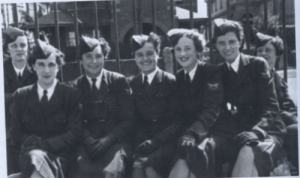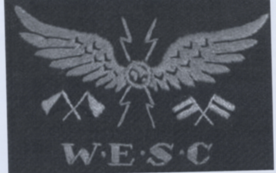- Author
- A.N. Other
- Subjects
- History - general
- Tags
-
- RAN Ships
- HMAS Harman (base)
- Publication
- June 2018 edition of the Naval Historical Review (all rights reserved)
By Dr J. K. Haken
The Women’s Emergency Signalling Corps (WESC) was formed by Mrs. Florence Violet McKenzie in March 1939 at 9 Clarence Street, Sydney, months before WWII was declared. They later moved to bigger premises in an old wool store at 10 Clarence Street. Fees were not charged but the trainees contributed a shilling a week towards the rent.
Mrs. McKenzie (28 September 1890 – 23 May 1982) was an electrical engineer who for more than a decade, from 1921 until about 1934, had operated a wireless sales and repair shop in the Royal Arcade, Sydney assisted from 1925 by her husband, also an electrical engineer. She was the first woman in Australia to obtain an Amateur Radio Operator’s Licence, an ardent advocate for women and Director of the Women’s Electrical Association.
Mrs. McKenzie had great difficulty in convincing the authorities to accept WESC graduates, although the need was obvious. For instance, post offices employed hundreds of female telegraphers to operate Morse Code units. Eventually, after prolonged discussion, the Royal Australian Navy accepted women telegraphers and on 28 April 1941 Mrs. McKenzie accompanied 14 women (12 telegraphers and 2 domestic helpers) to the RAN Wireless Telegraph Station at Canberra where they became civilian employees. These were shortly joined by 9 others and by August the amazing figure of 1000 female telegraphers were in the workplace.
The RAN Wireless Telegraph Station Canberra commenced operations on 20 April 1939. It comprised the Belconnen Transmitting Station and the Harman Receiving Station. It was not until 01 July 1943 that HMAS Harman became a commissioned establishment.
Female trainees were received from the RAN, Royal Indian Navy, RAAF and the Police. In appreciation, in May 1941 the RAAF made Mrs. McKenzie an Honorary Flight Officer in the Women’s Auxiliary Air Force.
The uniform of the WESC was designed by Mrs. McKenzie and consisted of a forest green jacket,skirt and cap, brown leather belt, brown flannel tie, brown gloves, brown shoes, light stockings and a white shirt or blouse with a collar. The WESC women paid approximately £2/5/0 ($5.00) for their winter uniform and most made their own summer uniform for around five shillings (50c).
A Women’s Naval Service finally eventuated and the Women’s Royal Australian Naval Service (WRANS) was formed on 24 July 1942. The members of the WESC employed by the RAN became the first enlistees of the WRANS. The names and details of these employees are shown below. It took many months to design and manufacture a female naval uniform, and during 1942 the forest green uniform of the WESC continued to be worn.


While the WRANS was disbanded in 1948 after WWII and subsequently re-formed on 1 January 1951, the WESC continued operation in the post war years. At the end of the war, the WESC School had trained twelve thousand persons as Morse Code Operatives.
On 8 June 1950, Mrs. McKenzie was created an Officer of the Order of the British Empire for her service to WESC.
In post war years, by 1952 the School had trained 2450 civil airline employees and 1500 merchant navy seamen. The Department of CivilAviationprovidedtheaircraftradio
equipment. The WESC School was discontinued in 1954 after fifteen years of service, during which many thousands of telegraphers were trained.
WESC Graduates employed at Harman, who became the first members of the WRANS.
| WESC Graduate | WRANS | WRANS |
| Status | Number | |
| Proven, Frances | Enlisted | WR 1 |
| Furley, Joan | “ | WR 2 |
| Ross, Pat | “ | WR 3 |
| Owen, Denise | “ | WR 4 |
| Stevens, Marion | “ | WR 5 |
| McLeod, June | “ | WR 6 |
| Wright, Daphne | “ | WR 7 |
| Prain, Jess | “ | WR 8 |
| Cade, Joan | “ | WR 9 |
| Hodges, Joan | “ | WR 10 |
| Thompson, Billie | “ | WR 11 |
| Alley, Judy | “ | WR 12 |
| Drew, Shirley | “ | WR 13 |
| Colless, Elsie | * | WR 14 |
*Did not enlist, but took her discharge




